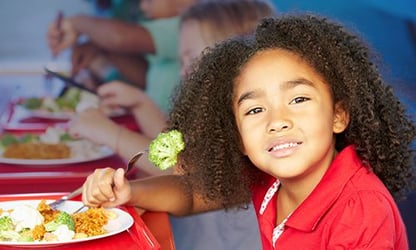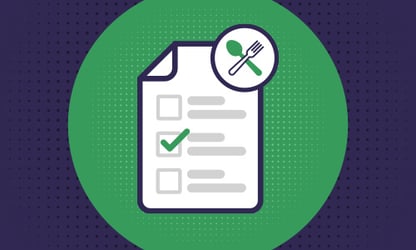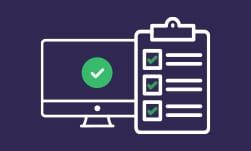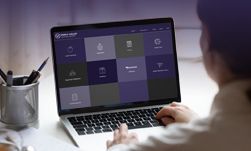Every day at schools nationwide, students look forward to taking a break and talking with friends at lunch, but often, a school lunchroom devolves into a noisy, chaotic environment. Noisy lunchrooms can cause stress to students and staff members who are sensitive to high noise levels. A chaotic atmosphere can also interfere with eating habits and lead to food waste.
Rowdy school lunches are unpleasant for some, but the right lunchroom management ideas can help everyone enjoy this time. These ideas can help control the lunchroom, keeping students quiet and engaged. Improving student conduct in the cafeteria goes a long way toward ensuring that everyone experiences a peaceful and nutritious break time that sets the tone for their mood throughout the day.
Schools can improve lunch breaks by providing structure, ensuring students line up for food in a specific manner, and sit at their tables throughout the period. Visual cues can also be helpful, as they direct children to the correct location and remind them to follow the rules. They are especially useful for visual learners.
Want to find out more? This article provides 15 practical strategies to consider for your school. They will help you achieve more peaceful lunchtimes for your staff and students.
Table of Contents:
- Why Lunch Room Behavior Matters in Schools
- 15 School Lunch Room Behavior Management Ideas
- What Makes a Lunch Room Management Strategy Work
- Bring It All Together With Supportive Tools- FREE Templates Included
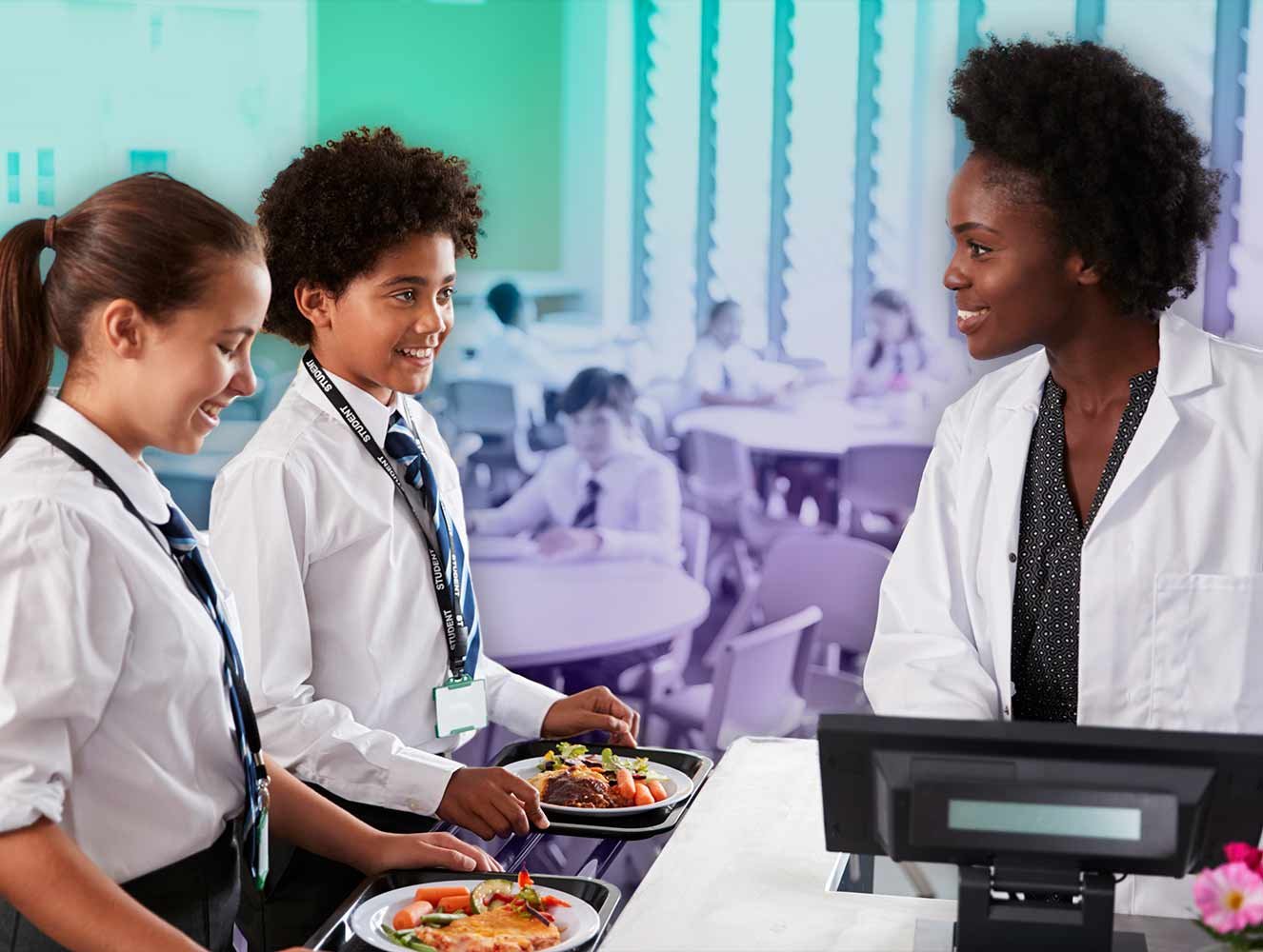
Why Lunchroom Behavior Matters in Schools
You may wonder why lunch room behavior matters in schools. After all, children don't learn much at lunch. Isn't it their time to let loose?
Well, here are some factors you may not consider.
- It Causes Stress: A noisy atmosphere can be stressful for some students and staff members, making them feel jittery throughout the day. It can interfere with their ability to enjoy their meals and distract them from their afternoon academics and activities.
- Food Waste: The chaos of a noisy school lunch room may distract students so they don't finish their meals and create food waste. Students are also deprived of nutrition, which can negatively impact academic performance.
- Communication Breakdowns: The noise makes it difficult to hear what others are saying. Students may not listen to teachers' orders or essential information they are trying to communicate to one another.
- Distracts Students Who are Learning: School lunches often occur at different times, with younger and older grades getting separate lunch periods. Students in some grades may be learning while others are at lunch. The noise can seep into the hall, causing distractions.
Stats and Case Studies
Various stats and case studies can back the importance of a calm lunchtime. For example, a 2021 Brigham Young University Study demonstrates the connection between students who love lunch time and a sense of belonging. 79% of students who love lunch have the highest sense of belonging score, 30.48.
A sense of belonging goes a long way in a school environment, making students feel comfortable in social situations and allowing them to demonstrate confidence in their academic goals. It can support them later in life.
A case study on Tried and True Teacher reveals a situation in which one teacher recognized the danger of an unruly cafeteria environment and took action to address it. She noticed that the lunch room in school was conducive to bullying and disrespect, and presented a solution, which included:
- Naming the lunch room to instill a sense of community
- Adding warm lighting and soothing music to produce a calmer environment
- Creating sheets for feedback to promote accountability
- Updating students and staff on progress and celebrating successes
- Allowing students to take part in lunch room monitoring
- Displaying post-it notes with pictures and affirmations
- Establishing a rewards system
The teacher's plan was successful, and she attributes much of the success to empowering the students.
Now you understand the importance of proper lunch room behavior. But what strategies will keep lunchtimes under control? These 15 ideas provide the ideal solutions.
15 School Lunch Room Management Ideas
In the past, lunchroom management was often reduced to screaming at kids to try to get them to behave. Today, school staff members implement technology and modern approaches to ensure a peaceful lunch period. The more subtle strategy reduces stress for everyone involved.
Here are some to consider implementing in your school:
1. Assign Seats for Stability
Assigning seats means every child knows exactly where they need to go as soon as they enter the room. It saves time and creates order, reducing the talking and debating that comes with finding a seat. Instead of trying to sit with friends and struggling for space, kids will have allocated spaces, ensuring no kid gets left behind.
Implementation Tips:
- Create a Thoughtful Seating Plan: Behaving doesn't mean students can't sit with their friends. You may even take requests, ensuring children can eat lunch with their friend groups. Place loners and newcomers with friendly kids who will make them feel welcome.
- Utilize Technology: Utilize technology to create cafeteria seating plans that yield organized results. Print out the seating plan for your students, ensuring everyone knows where to sit. You can also hang a copy in the lunchroom.
- Consider Special Needs: Place special needs children towards the front so they can easily communicate with staff members if necessary. This seating may also allow them to get in and out of the cafeteria easily.
2. Create Clear Line Protocols
Lines are an effective way to control children as they enter the lunchroom. They create order and can enhance security, allowing staff to monitor the children better. Some children may become impatient when waiting in lines, but with the right approach, they can achieve beneficial results.
- Have Teacher's Guide Lines: Teachers should guide lines to keep things in order.
- Place Tape and Signs Around the Cafeteria: Lines may be more effective with visual cues. Consider placing tape on the floor and signs around the cafeteria so students know where to line up.
- Consider Key Areas for Lines: Students may line up before and after lunch and when getting food from the lunch staff. Use pre-set lines to guide them throughout the cafeteria.
- Ensure Lines Move Quickly: As previously mentioned, kids can get impatient and rowdy when waiting on lines- especially the lines to pick up their food. Consider systems to speed up lines, such as a cashless campus, which we will explore in the next section.
3. Switch to a Cashless Campus
A cashless system is a great way to improve school lunches. It speeds up lines in the lunchroom, so students are less likely to get impatient and stressed. It may require students paying with cards or having parents pay in advance.
Implementation Tips
- Cards or Prepay: Determine the best way to offer a cashless campus. One example is to have parents prepay for lunches. For example, they can pay for lunches through each week, month or semester. Their kids will receive a card they can show to pick up their lunches in the cafeteria. Alternatively, schools can require students to use a cash card to pay.
- Utilize School Lunch POS Software: Vanco's School Lunch POS Software helps schools keep lunch payments in order. It automates payments, provides a student portal, reduces food waste, offers inventory tracking, generates reports, and notifies parents of payment deadlines, all in one secure system.
4. Use Provide Visual Cues and Signage
Earlier, we mentioned the importance of visual cues in lines. However, they can be incorporated all over the cafeteria to aid with communication. They are especially useful for younger kids and those who are sensitive to stimuli.
Implementation Tips
- Utilize Signage: Signage can direct lines, help students find the trash and various food stations, and remind students to be quiet and behave.
- Table Management: Some schools may install color-coded cones or cards at the end of each table to indicate the table status. For example, red can indicate students are eating, yellow can mean 'ready for cleanup' and green can mean empty.
- Portion Control: Signs can indicate what food portions and healthy meals should look like as per MyPlate.gov.
- Make Visual Cues Easy to Read: Consider students with vision impairments and make signs easy to read. Text should be bold, and colors should contrast for optimal readability.
5. Establish a Routine and Stick to It
The most effective way to control student cafeteria behavior is through routines. A routine will reduce chaos in the lunchroom. It also makes children feel safe and helps them develop life skills and healthy habits.
Implementation Tips
- Outline Your Routine: Routines may look different for different schools, and that's okay. You must decide which works best for your organization. For example, you may have students enter in a line, go straight to their tables or the cafeteria line, and line up again before they leave.
- Communicate the Routine: Ensure everyone is aware of the routine by handing out documents to students and staff members. You may also post these documents on the cafeteria walls.
- Work Out Clear Procedures for Getting Food: Students and staff should understand what's involved in getting food, so they can move through the lunch line in an orderly fashion.
6. Train Staff on Positive Behavior Techniques
Your teachers are expected to know positive behavior interventions, but your lunch room staff may not. It's up to schools to ensure they interact with students properly to promote good behavior. A combination of clear expectations and positive reinforcement is beneficial.
Implementation Tips
- Utilize Positive Reinforcements: Staff should show praise for good behavior verbally and through a rewards system.
- Set Clear Expectations: Setting expectations ensures students understand what behavior is acceptable and unacceptable in the cafeteria.
- Modeling and Teaching: Cafeteria staff should set an example, exemplifying the behavior they would like to see. If a child misbehaves, they should suggest alternate behavior that the child can use as a guide.
- Build Support: Staff members should build supportive relationships with students by providing an attentive environment.
7. Reward Good Behavior Publicly
Publicly rewarding good behavior encourages other students to follow suit. It makes children proud of their accomplishments and more likely to repeat them. Schools that implement this strategy will see better behavior overall.
Implementation Tips
- Set Expectations: Ensure students understand how the school defines good behavior, so they know what's expected of them.
- Sticker Charts: Give each child a chart with squares that can be stamped or covered with a sticker every day they behave. When they get a certain number of stamps and stickers, they can trade them in for fun prizes and awards.
- Make a Student of the Month Award: Rather than recognizing each student for every good deed, consider a student of the month award for the best-behaved student in the cafeteria. You may reward them with a gift card, a fun activity, a homework skip or another cool gift to make the award something to aspire to.
- Verbal and Physical Praise and Recognition: Kids love prizes and rewards, but they will also feel recognized by a smile, a pat on the back, and words of praise.
8. Separate Noisy Zones From Quiet Areas
Schools may consider dividing their cafeteria into noisy zones and quiet areas. This cafeteria noise control strategy enables students to stay in quiet areas to enjoy their food and experience a sense of calm, then switch to noisy zones to play with friends, thereby enjoying the best of both worlds.
Implementation Tips
- Keep Noisy Zones and Quiet Areas Separate: Ensure students in quiet areas can enjoy peace and relaxation by making two distinct areas. For example, you may make the entire cafeteria your quiet area and designate an outdoor field as a noisy zone.
- Ensure Children Understand Each Zone: List acceptable behavior in each zone. Print it on a document and hand it out to students. You may also hang it on the wall for added clarity. Clearly mark both zones to reduce confusion.
- Use Rewards and Consequences: Reward students who demonstrate appropriate behavior in both zones. Children who violate these rules must understand that there are consequences.
9. Play Soft Music for Calm
Everyone loves dining music. Why not pipe soothing music through your cafeteria to promote a sense of calm? It will also enhance the atmosphere, contributing to a pleasant school lunch room background.
Implementation Tips
- Choose the Right Music: If you look up 'soothing music' you will find a lot of classical music and nature sounds. These options may work, but if you want to be a little more hip, there are plenty of soothing pop songs such as Three Little Birds by Bob Marley and Count on Me by Bruno Mars. If you use music with lyrics, make sure they are clean.
- Determine How to Pipe the Music Through the Cafeteria: Schools are often short on funds, and sound systems can be expensive, especially if you need one big enough to pipe through the cafeteria. However, your AV department may have a PA you can borrow. Alternatively, you can set up speakers throughout the cafeteria for a more affordable approach.
- Allow Kids to Choose: Engage students by allowing them to choose the songs they want to add to the playlist. Ensure the music is soothing and age-appropriate before approving it.
10. Include Students in Rule Making
Students are more likely to accept rules they make. Ask students which rules they would like to see in their cafeteria. Consider setting up a government system for approval.
Implementation Tips:
- Set up a Suggestions Jar: Let kids suggest rules by setting up a suggestions jar. They can fill out papers with rule suggestions and place them in a jar. Or, for a more modern approach, set up an email.
- Teacher Review and Student Body Vote: Teachers should review the suggestions. If they think the suggestion is valid, they can take it to the student body for voting purposes. If it passes, it becomes a rule.
- Teacher Suggestions: Teachers may also suggest rules that can 'become law' with a student body vote.
11. Set Expectations with Parents
Parents should understand the importance of a peaceful lunch room. Teachers should send materials to parents outlining cafeteria rules so parents can review them with their children if necessary. Hopefully, this approach will help keep students in line.
Implementation Tips
- Send Out a Parent Newsletter: Create a parent newsletter explaining student expectations in the cafeteria. Ensure they understand the importance of a calm lunch room environment. Encourage them to review the rules with their children.
- Provide Reporting Systems: Schools may utilize an app to keep parents updated on their child's behavior in the cafeteria and the school in general. It can serve as a digital report card.
- Establish Open Communication: If students aren't following cafeteria behavior management guidelines, parent involvement may be necessary. Rather than taking a 'punishment tone', establish shared goals and focus on collaborative problem-solving. Suggest activities that the parent and child can do together to encourage better behavior.
12. Decorate with Student Artwork or Themes
Student artwork contributes to ideal school lunch room decorating ideas. It increases self-esteem and confidence in children and inspires them to respect their surroundings. Artwork also promotes a sense of community and belonging that can be valuable in social lunchtime situations.
Implementation Tips
- Suggest Themes: Inspire students to submit their artwork by suggesting themes. For example, they may draw pictures of their favorite food or a healthy lunch.
- Change Out Artwork: Schools should change out artwork regularly to give everyone a chance to be featured. They may display kindergarteners' artwork in February and 6th graders' artwork in March.
- Work with Teachers: Cafeteria staff may see higher success rates in lunchroom decor ideas when they work with teachers. For example, the art teacher may give their class some time to create cafeteria art.
- Make Events: You can further incentivize participation by making events like art contests and showings.
13. Teach Lunchroom Etiquette in Classrooms
Students may be even better behaved in the lunchroom if they are taught school dining etiquette in classrooms. They should learn to use quiet voices and good table manners, dispose of trash properly, be mindful of and respectful towards dietary restrictions, focus on waste reduction, be kind, and follow the school lunchroom rules. Cafeteria staff and teachers should work together towards this common goal.
Implementation Tips
- Collaborate to Define Lunchroom Etiquette: Teachers and lunch staff should get together to define proper lunch etiquette. This list can change and grow as issues are identified.
- Communicate with Students: Students should be provided with documents that define proper lunch etiquette so they understand the appropriate behavior.
- Utilizing Teamwork: Teachers and cafeteria staff must present a united front. Lessons regarding school etiquette taught in the school lunch room should be reinforced in the classroom and vice versa. This approach will make etiquette second nature to students.
14. Create Peer Monitor Programs
Peer monitor programs are an excellent way to encourage good behavior in the lunch room. Students gain accountability, making them less likely to act out. Additionally, when they get orders from their peers, they may be more likely to listen.
Implementation Tips
- Outline Monitor Duties: Student monitors should understand what's expected of them. They may be required to guide their peers as they line up, or remind them to be quiet. Monitors should never be put in a situation that makes them feel uncomfortable or allows them to boss their peers around.
- Provide Training: Monitors may require training to ensure they understand the rules and conflict resolution techniques. Role-playing techniques can be helpful.
- Everyone Gets a Chance: The peer monitor position should not be reserved for the best students. Everyone should have an opportunity to keep the cafeteria in order. This system ensures that students prone to bad behavior learn accountability.
- Provide Supervision: Peer monitoring is a tough job and students may require supervision. Ensure staff are there to help if issues arise. Regular communication is essential so monitors can learn from mistakes and improve their approach.
15. Track and Celebrate Progress Over Time
Schools can actively improve lunch services by tracking progress over time. List school lunch room goals and revisit them periodically. Assess how you're doing, which lunchroom supervision strategies are working, and which can use improvement to determine the best approach.
Implementation Tips
- Create KPIs: Key performance indicators (KPIs) can help you measure the success of your approach. Some useful and measurable KPIs may include food waste, the time it takes students to get through food lines, and student satisfaction surveys.
- Share Your Successes and Challenges: Your KPIs should not be a secret. They should be shared with your students and throughout your school. This approach ensures teachers and students know what you're aiming for so they can work with you to help achieve goals.
- Celebrate Progress: Progress can be achieved as a group, and it should be awarded as such. When goals are met, celebrate them with a special meal like a pizza party, a dessert station or a healthy and equally fun alternative.
What Makes a Lunch Room Management Strategy Work
A lunch room management strategy doesn't happen overnight. It takes a village. Here are some tips that will make your cafeteria a more pleasant environment.
- Collaboration: As you may have noticed, lunch room management requires collaboration. Teachers, students, cafeteria staff and parents must come together to make it a success.
- Communication: Considering the importance of collaboration, communication is essential. All parties should be aware of cafeteria goals so they can work together to make them a reality. Feedback should also be utilized so improvements can be made.
- The Right Environment: Lunch room management will be more successful if it happens in a soothing, structured environment. Music, visual cues, school meal routines, and a separation of noisy zones and quiet areas contribute to a calming atmosphere.
Bring It All Together with Supportive Tools- FREE Templates Included
Lunch Planning Just Got 10X Easier- Grab Your Free Kit
What’s inside the free kit? Tools that deliver real results:
- Inventory trackers to keep it simple.
- Editable safety checklists you can print instantly.
- Posters that kids actually notice (and follow).
- Menus and calendars to plan ahead without stress.
- And much more!
Digital Payment Systems for Schools
Lunchtime can be a lot easier with Vanco's digital payment systems for schools. It offers a payment portal for parents, alerting them about low balances and allowing them to preorder. The systems are centralized, putting all payments in one place, and streamlining reporting.
Beyond lunch, it can also help schools collect payments for child care, technology, registration, performing arts events, and more. The system is simple, secure, and it reduces the need for office administration.
Final Thoughts
An organized school management system is possible with the proper iteration, collaboration, communication, and school-wide consistency. While this article serves as a useful guide, we encourage you to experiment to find a system that best suits your needs. Integrating the right approach will help your students improve their focus on academics and create a more pleasant overall school environment.
Although a human approach is necessary, Vanco's tools can help. Our software will make your lunch room more organized while reducing administrative burdens. Don't hesitate to reach out with any questions you may have.
Need Help Choosing a Lunch Ordering System?
Don't spend thousands of dollars and countless hours on the wrong choice. Save yourself a lot of headaches by making an informed decision for your school. Download our free guide to get the questions you need to ask before making this critical decision. 
Want to streamline lunchroom operations and simplify payments? Call us at 866-940-1352 to learn how we can help.




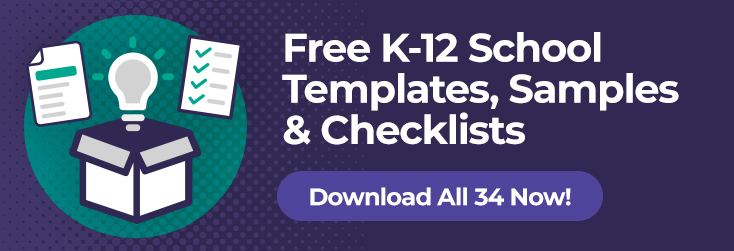

.jpg?width=734&height=251&name=School-Lunch-Kit_blog_CTA_image%20(1).jpg)
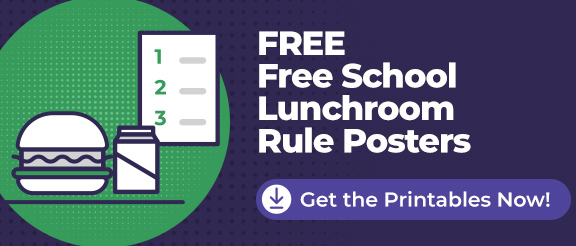
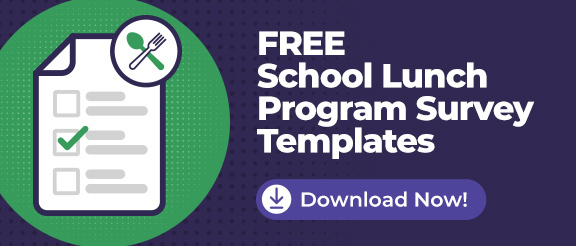

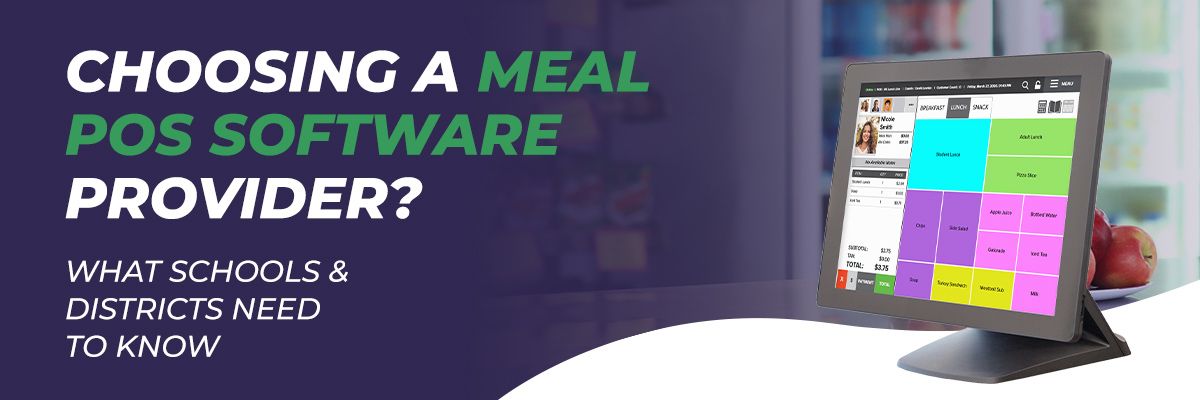

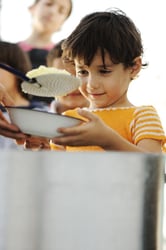
.jpg?width=450&height=250&name=School-Lunch-Rules_thumbnail%20(1).jpg)
